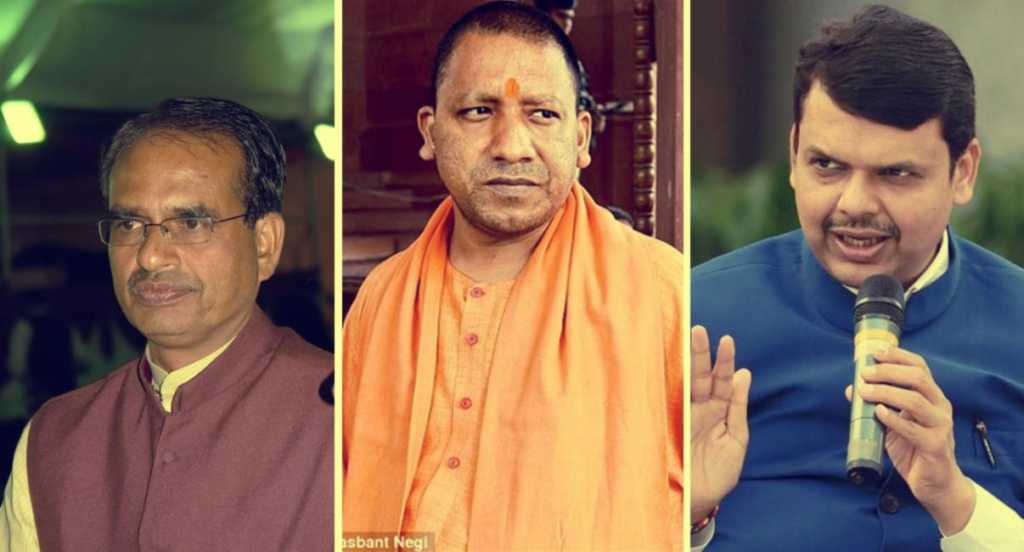Earlier this week, army chief Bipin Singh Rawat stated that India was prepared to fight wars on two and half fronts simultaneously. No prizes for guessing the first two fronts he was referring to. The last half was a reference to insurgency movements and other movements within the country that were at war with the country.
Territorial disputes with the Chinese and the Pakistanis are old, and four major wars have been fought regarding these. Not a single bullet was exchanged between both sides on the Sino-Indian frontier in the last forty years though, while a low intensity war has persisted with Pakistan throughout. The enemy within on the other hand has received several body-blows since 2014, although the state has been unable to curtail the steady instalments of oxygen this enemy has received.
An article published on Opindia recently speaks about how the out-of-power Congress Party and its ecosystem have been at war with the Indian state for the last three years. This is indeed true. If the images that came out of Madhya Pradesh in the last week are anything to go by, the Congress Party has reduced itself to the level of Maoists, Kashmiri separatists and the Sharia-seeking mobs of West Bengal, thus infusing new life into the enemy within.
The pictures coming out of Madhya Pradesh shocked us. When the Congress Party’s hand behind the supposed farmers’ agitation was exposed, it did not come as a surprise to anyone. The source of almost every agitation that the mainstream media has chosen to focus on in the last three years has been the same. What shocked people were images of senior politicians from the party, some of them elected representatives, ordering the mobs to burn down police stations and vehicles.
This isn’t new, especially coming from an organization that openly and systematically conducted a pogrom against the Sikh community in 1984. But when out of power, the organization has been subtler in its ways. It orchestrated the intolerance farce for instance, and made its cronies return the awards it had loaned out to them when in power. Very clear links between the protesting Jats in Haryana, the protesting Patels in Gujarat, the protesting students of JNU and the Congress Party emerged. The media too played along and blew things out of proportion. But when the moment of reckoning arrived, these movements were found to be hollow and exaggerated, and had zero political impact.
The Congress Party chose to use the farmers this time around because they had the sudden realization that this would hurt BJP the most. In Madhya Pradesh and Maharashtra, the state governments are highly popular primarily because they have gone out of their way to take care of the agricultural sector’s interests. In both states, the sector has grown over ten percent under BJP governments, making the party highly popular among the largest section of society- the farmers.
When the agitations took a violent turn in Madhya Pradesh, it was discovered that the miscreants and those the police shot at were not farmers, but protesting in the guise of being farmers. If two and two are put together, it is quite clear that the violence was orchestrated by the Congress Party, and their leaders went about spreading it quite systematically. One can sympathize with the state governments to a certain extent, because they are not used to dealing with the Congress Party in the same way one deals with the Maoists or the Hurriyat, considering this is the principal opposition party and that it ruled the country just three years ago. But it cannot under any circumstance be an excuse not to crack down on those attempting to create unrest within India using violent means.
This is where both the state governments have failed partially. The intelligence gathered on the ground should have prevented the scenes we witnessed. Anti-social elements should have been shown their place before they could set a domino effect in motion. A fortnight ago, reports trickled out of Saharanpur in Uttar Pradesh about clashes between the Dalits and the Rajputs. The state government was already two steps ahead of the media, and before a clear picture of the hows and the whys of the conflict could emerge, Yogi Adityanath’s government had buried the incidents and wiped the slate clean. If a newly elected government can handle a situation so effectively, surely the more experienced ones have the resources and the capacity to do the same.
Irrespective of the political brownie points Mr. Shivraj Singh Chauhan earned by going on an indefinite fast until the violence in his state subsided, the fact remains that it should never have reached such heights in the first place. The chief minister of Maharashtra should never have been arm-twisted into announcing India’s biggest farm-loan waiver, an economically suicidal move. Sometimes, screws must be tightened behind closed doors to maintain peace, and governments who do not hesitate to do so are the need of the hour.
Congress vice-president Rahul Gandhi pushed around an on-duty policeman during his farcical attempts to enter the state of Madhya Pradesh. Instead of detaining him for some hours, why wasn’t he charged with manhandling an officer on duty? Why does the woman MLA who asked her supporters to burn down police stations still walk free? Why does it take a chief minister to go on a fast for violence to subside, when law enforcement can and should get it done instead?
